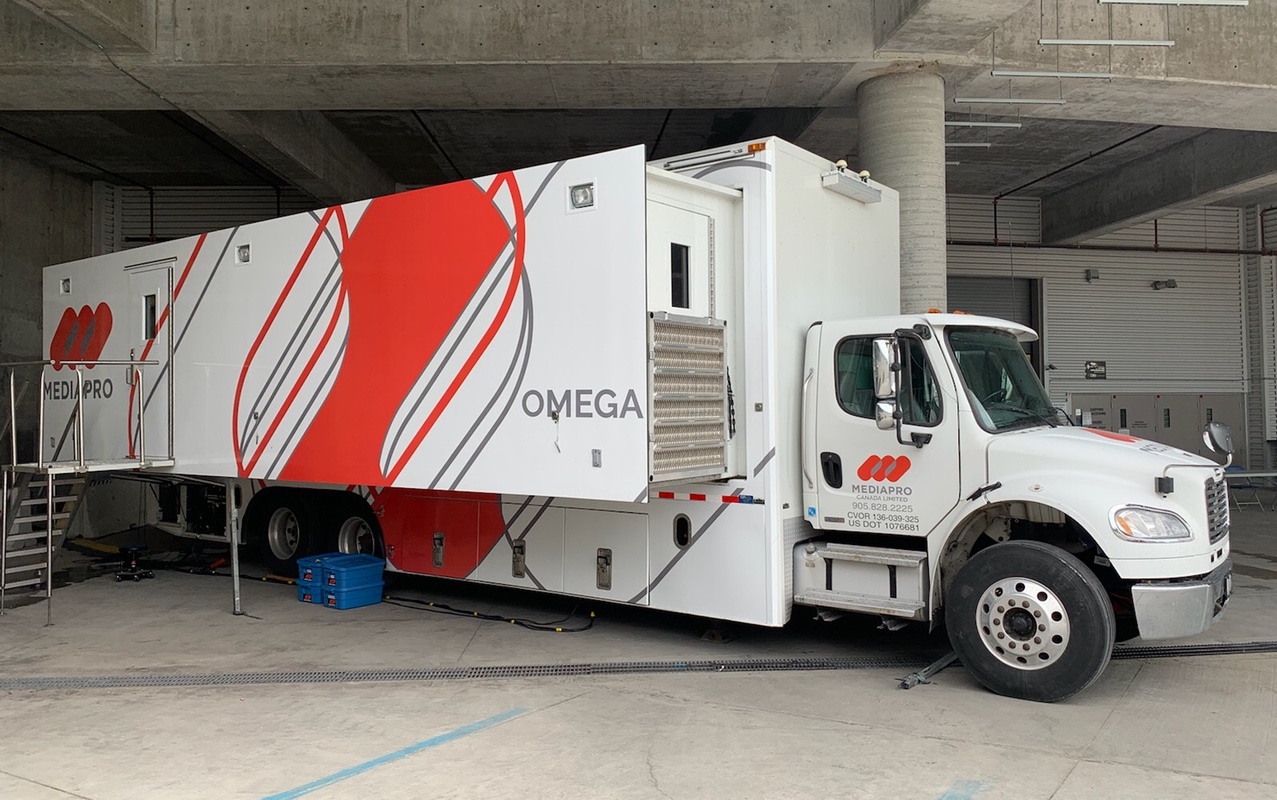Mediapro Canada Set To Expand as REMI Demand Increases
Canadian Premier League growth spurs at-home production
Story Highlights
It has been a busy year for Mediapro Canada, which continues to expand its footprint and customer base. Topping the list of accomplishments in 2022 was the production of 117 Canadian Premier League soccer matches in a little more than six months. The video-production service relies on the REMI production model to meet the increased demand.
“It was a lot of crew we had to source with an average of 22 per game,” says Mediapro Canada VP Chris Priess. “Even though we moved to a REMI model, we still had a large number of people onsite at those venues.”
Mediapro Canada also launched its seventh truck. Omega is a 40-ft. mobile unit housing a Grass Valley Kayenne switcher, eight Sony HDC-2500 cameras, and a 12-channel EVS XT server, which Priess says has already become a workhorse. Mediapro Canada is also operating in the U.S.: its Odyssey 4K production truck is being used by ESPN for college football under a deal secured by the Mediapro team in Miami.
“It is ideally suited for REMI, and we’ve done full onsite productions as well,” adds Priess. “But we’ve now done 13 weeks of shows. That is a relationship we pursued for many years, and we’re now in their regular rotation.”
Up next for Mediapro Canada is preparing for growth in remote production. For example, with the Canadian Premier League adding a new team, Vancouver FC, next year (and possibly two or three the following year), Priess and company aim to ensure that production facilities are ready to expand as well.
“Our buildup is all on the basis that we’re going to have increased production demands at the start of the season,” he says.
The goal, he adds, is to create a production hub where replay, graphics, and other production personnel can be in one facility rather than working from home. Mediapro Canada is upgrading the electrical system, increasing internet and fiber redundancy, and adding backup generators to ensure that new master-control and production facilities can keep humming regardless of conditions.
“REMIs can provide more consistency with production teams, and the crew is not exhausted from travel,” Priess points out. “And there’s more synergy when you’re working with the same people as they learn how to complete a task as a team. We would rather have them all in the building, for peace of mind.”
There are still people onsite, ensuring that the audio and video equipment is set up properly and ready to go. An engineer is onsite, along with a video shader, who connects cameras, cleans lenses, and, of course, makes sure all the cameras are matched in terms of color. “The A2 count onsite fluctuates,” he adds, “based on whether it is just effects mics or [whether] talent is onsite.
And the upside of REMI is not only that clients continue to gravitate toward it but that, if events are spaced properly, teams can do two games instead of one.
“That is very cost-efficient,” says Priess. “We can pass those savings onto our clients, and that is our goal.”

Chris Priess, VP of Mediapro Canada.
Mediapro Canada also launched its seventh production truck, Omega, a 40-foot production unit with a Grass Valley Kayenne switcher, eight Sony HDC-2500 cameras, and a 12-channel EVS XT server which Priess says has already become a workhorse. Mediapro Canada is also operating in the United States as its Odyssey 4K production truck is being used by ESPN for college football. That deal was secured by the Mediapro team in Miami.
“It is ideally suited for REMIs and we’ve done full on-site productions as well,” adds Priess. “But we’ve now done 13 weeks of shows and that is a relationship we pursued for many years and we’re now in their regular rotation.”
Up next for Mediapro Canada is getting ready for the growth in remote production. For example, the Canadian Premier League is adding a new team, Vancouver FC, next year (and possibly two or three the following year) so for Priess and company it’s important to get ready to make sure production facilities expand as well.
“Our build up is all on the basis that we’re going to have increased production demands at the start of the season,” he adds.
Priess says the goal is to create a production hub where personnel working on replay, graphics, and the rest of the production can be in one facility rather than working from home. Mediapro Canada is upgrading the electrical system, increasing internet and fiber redundancy, and adding backup generators to ensure that new master control and production facilities can keep humming no matter what the conditions.
“REMIs can provide more consistency with production teams and the crew is not exhausted from travel,” he adds. “And there’s more synergy when you’re working with the same people as they learn how to complete a task as a team. But we would rather have them all in the building working for peace of mind.”
There are still people on site, ensuring the audio and video equipment is set up properly and ready to go. An engineer as well as a video shader who connects cameras, cleans lenses and of course makes sure all the cameras are matched in terms of color.
“The A2 count on site fluctuates based on whether it is just effects mics or talent is on site,” he adds.
And the upside of REMI is not only that clients continue to gravitate towards it but that if events are spaced out properly teams can do two games instead of one.
“That is very cost efficient,” says Priess. “We can then pass those savings onto our clients and that is our goal.”

